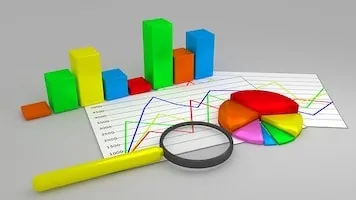Understanding more about the needs and wants of customers through demand sensing can help supply chain leaders make informed decisions, improve inventory management, and increase profitability.
In recent months, conversations about how to improve forecasting in the supply chain have focused on a subject: demand sensing.
However, what is demand sensing?
In its most basic sense, it’s about sensing demand based on variables in supply and demand, but that’s only half the concept. The remainder lies in understanding what it means for current supply chain and inventory management operations and how to utilize it the best.
Deficiencies in the Supply Chain Derive From Inaccurate, Poor Forecasting
Methods
Failures in the supply chain derive from problems in supply and demand management. Peaks and lulls in consumer orders result in longer shelf-life for products in warehouses.
During peaks, demand is so high that the company may run out of stock, and items are back ordered. Unfortunately, a cause for increased lead time for products is a result from over-ordering, so in this back and forth situation, carrying costs continue unchecked.
While long-term forecasting is still crucial to supply chain management, supply chain leaders need a way to refine the short-term forecast, within 56 days, to reflect the realistic demand of products. At the same time, millions of SKUs, thousands of vendors, and globalization have made manual inventory tracking and forecasting obsolescent.
This is where demand sensing comes into play.
Demand Sensing Leverages New Methodologies and Data to Enhance Models
Demand sensing automates the process and leverages new
technologies, including automation in the warehouse, to achieve speed and accuracy in forecasts, resulting in decreased lead time.
According to Arindam Sen of HD Tech, it refers to the use of mathematics and real-time data to calculate forecasts with greater accuracy. In other words, it’s a concept similar to the application of analytics to understand what products customers want, but demand sensing is based on supply and demand variability.

Instead of traditional demand forecasting, this technology goes back to using updated data to create more accurate, short-term forecasts. These forecasts apply to purchase and procurement, so the warehouse can restock and reorder products to meet consumer demand. This helps enterprises manage the effects of fluctuation without sacrificing long-term success and plans.
Applied in conjunction with inventory and slotting optimization, companies can move toward a just-in-time inventory management model. This effectively lowers carrying costs and enhances the responsiveness of the supply chain.
Of course, supply chain leaders still need to know to put the power of this approach to work in the modern supply chain.
How Can I Take Advantage of Demand Sensing
Many arguments have been made that the value of this technology makes it less opportunistic than other improvements in the supply chain.
Unfortunately, that concept is nothing shy of a dominant myth, and retail
giants, like Nike, have successfully leveraged demand sensing to cut lead times by half and achieve double-digit growth, notes Emma
Cosgrove of Supply Chain Dive.
Nike’s version of this technology uses rapid prototyping and connected systems, leveraging real-time data, to refine replenishment and increase flexibility in the supply chain. Executives can learn from Nike’s example by following these key steps:
- Integrate your WMS with other supply chain systems.
- Collect real-time data from all operations and channels.
- Focus on product lead-time.
- Know the basics of demand sensing, including automated, real-time forecasting and continuous refinement of forecasts, in vetting vendors that offer this technology.
- Work with suppliers and vendors to collect data and streamline replenishment activities.
Put the Power of Demand Sensing in Your Supply Chain to Work
Demand sensing is a term that predates analytics, but it is an invaluable resource and way of managing inventory, mainly replenishment, in
supply chains.
Executives need to leverage technology and software to use demand sensing to drive lead times down and move other inventory optimization processes into the 21st century.


Comments are closed.